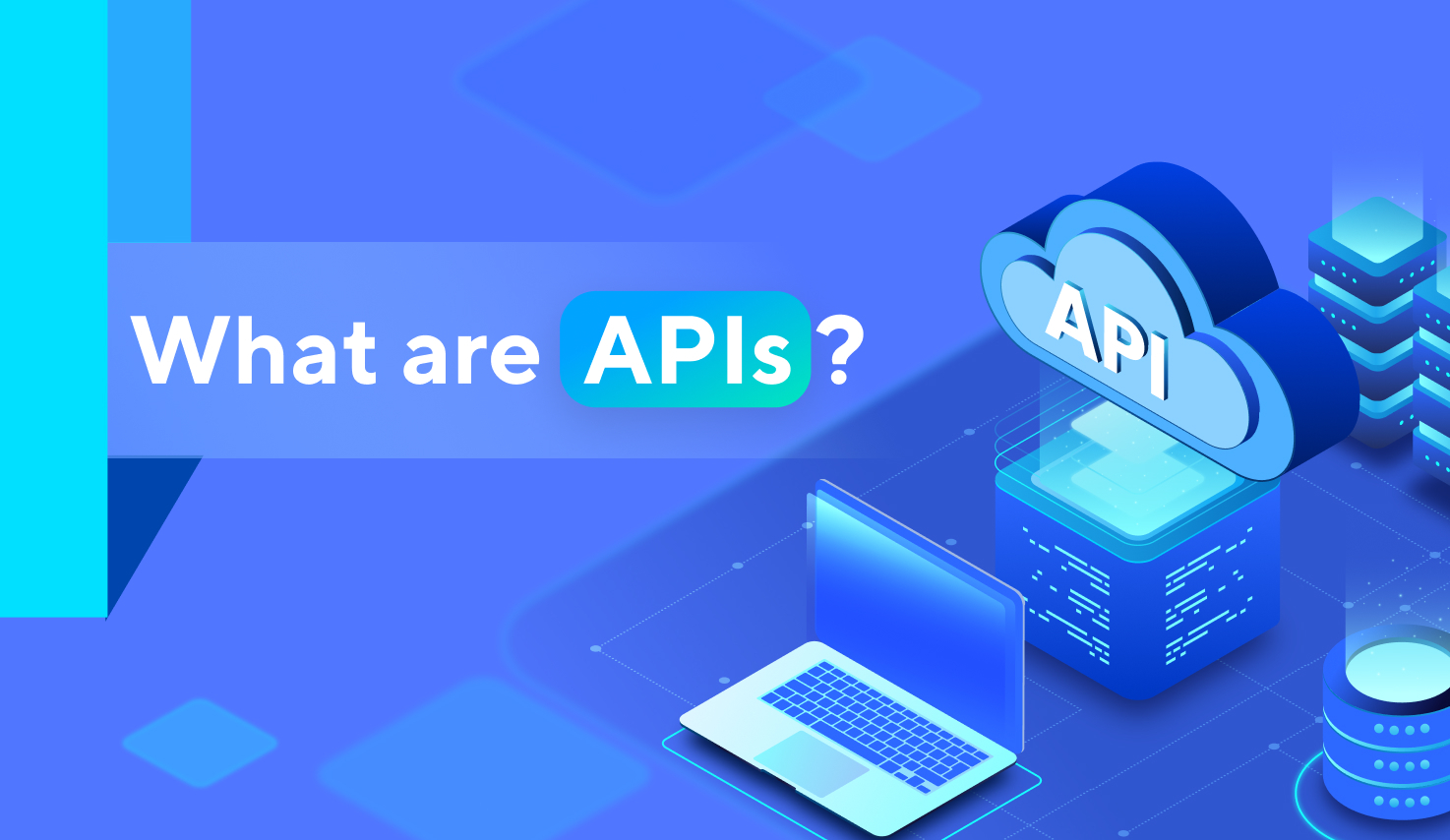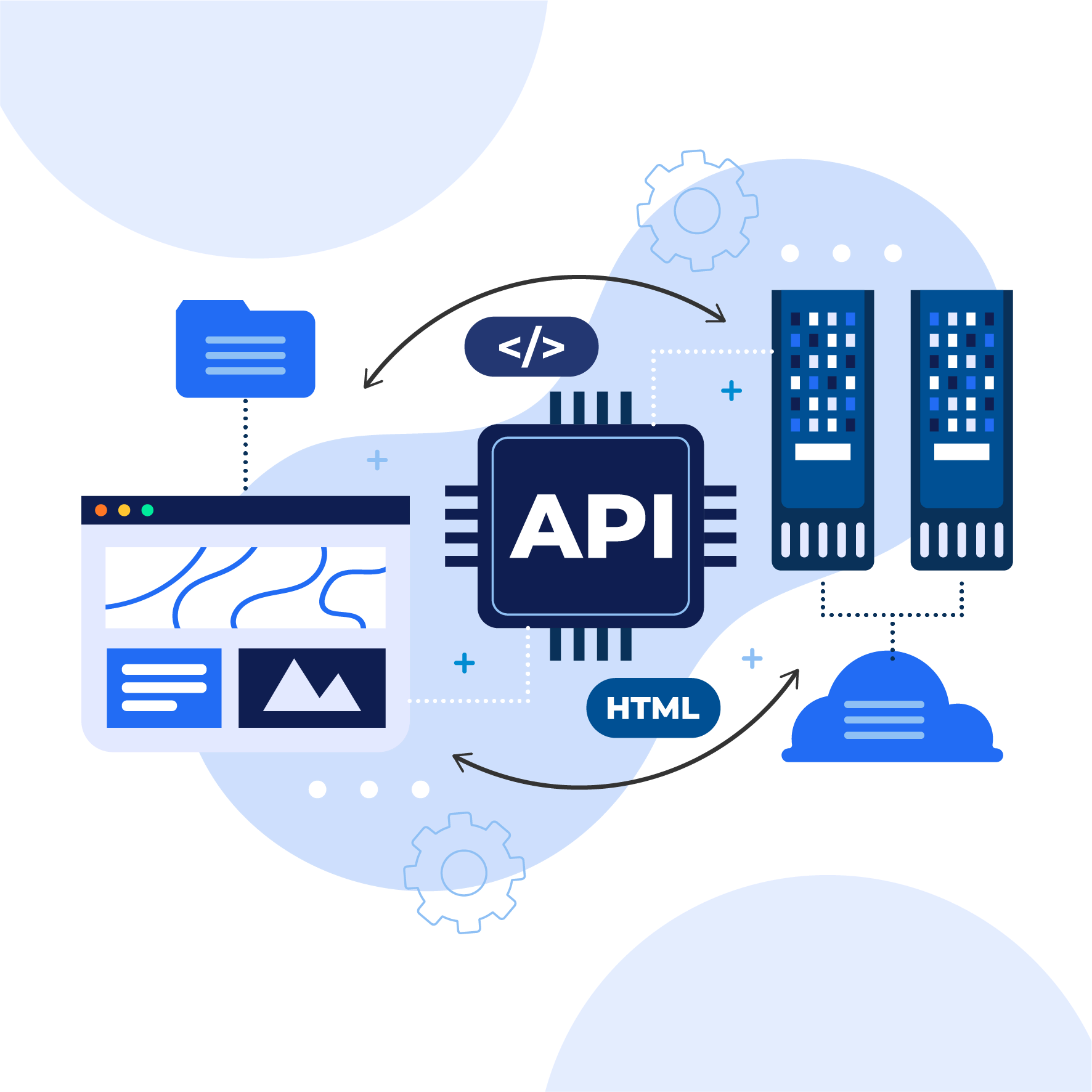What are APIs?

APIs, or Application Programming Interfaces, are the backbone of modern software development. They allow different systems to communicate with each other, exchange data, and work together seamlessly. API Architecture
APIs come in different flavors, each with architecture and design principles.
RESTful APIs
REST stands for Representational State Transfer, a famous architecture for building web APIs. RESTful APIs use HTTP verbs to perform operations on resources, such as GET, POST, PUT, and DELETE. They also rely on HTTP status codes to indicate the outcome of each request, such as 200 for success, 400 for client errors, and 500 for server errors.
SOAP APIs
SOAP stands for Simple Object Access Protocol, another popular architecture for building web APIs. SOAP APIs use XML messages to exchange data. They rely on a WSDL (Web Services Description Language) file to describe the API's operations and data structures. SOAP APIs tend to be more complex and heavyweight than RESTful APIs. Still, they also offer more features and security options.
GraphQL APIs
GraphQL is a relatively new API architecture that Facebook developed. It allows clients to query the API for specific data and get back only what they need instead of getting a full response with lots of unused data.
GraphQL APIs utilize a schema to define the available data types and operations. They support advanced features like real-time updates, subscriptions, and nested queries.
API Components
APIs consist of several components that work together to define their functionality and behavior. Here are some of the most important ones:
Endpoints
Endpoints are the URLs that clients use to access the API's resources. They consist of a base URL and path identifying the specific resource or operation. For example, “https://api.example.com/users/123” is an endpoint that retrieves the user with ID 123 from the user's resource.
Methods
Methods are the HTTP verbs that clients use to perform operations on the API's resources. The most common methods are GET (retrieve data), POST (create data), PUT (update data), and DELETE (delete data).
Parameters
Parameters are the variables that clients use to customize the API's behavior and retrieve specific data. Parameters can be passed as part of the endpoint's path, as query parameters, or as part of the request body.
Headers
Clients use headers to provide additional information about requests and responses.
Headers can include authentication tokens, content types, cache controls, and more.
API Security
APIs are often exposed to the public internet, which makes them vulnerable to attacks and misuse. APIs need to implement security measures to prevent unauthorized access and protect sensitive data.
Authentication
Authentication is the process of verifying a client's identity and granting access to protected resources. APIs can use different authentication methods, such as API keys, OAuth tokens, and JWT tokens.
Authorization
Authorization is granting or denying access to specific resources based on the client's role and permissions. APIs can use different authorization methods, such as role-based access control and attribute-based access control.
Rate Limiting
Rate limiting is limiting the number of requests a client can send to the API within a certain time frame. Rate limiting helps prevent API abusive or malicious usage and ensures fair access for all clients.
API Documentation
API documentation is crucial for developers who want to integrate an API into their applications. Good documentation should be clear, concise, and comprehensive. Here are some of the most common types of API documentation:
API Reference
An API reference is a comprehensive guide that describes all the endpoints, methods, parameters, and headers available in the API. It should include examples and explanations for each element and be easy to navigate and search.
Getting Started Guides
These guides are step-by-step tutorials that show developers how to set up and use the API in their application. Getting started guides should be concise and easy to follow, with clear examples and explanations.
Code Examples
Code examples are snippets demonstrating using specific API features or performing everyday tasks. Code examples should be easy to copy and paste into a developer's application and available in different programming languages.
API Testing
API testing is an essential part of the software development lifecycle. It helps ensure that the API works as expected, performs well, and is free of bugs and errors. Here are some of the most common types of API testing:
Unit Testing
Unit testing is the process of testing individual functions or components of the API in isolation. Unit tests should be automated and cover all the possible edge cases and error scenarios.
Integration Testing
Integration testing is how the API integrates with other systems and components in the application. Integration tests should cover all the possible integration scenarios and simulate real-world usage.
Load Testing
Load testing is the process of testing how the API performs under heavy load and stress. Load tests should simulate many requests and users and measure the API's response time, throughput, and error rate.
API Management
API management manages and optimizes the API's lifecycle, from design to retirement. API management includes several tasks and tools, such as:
API Gateways
API gateways are intermediaries between the clients and the API that handle the traffic routing, load balancing, caching, security, and other tasks.
API Analytics
API analytics help track and measure the API's usage, performance, and user behavior. API analytics can provide insights into the API's strengths and weaknesses and help optimize its design and implementation.
API Versioning
API versioning is managing different API versions to support backward and forward compatibility. API versioning should follow a clear and consistent naming convention. It should handle API resource changes, parameters, and behavior.
API Standards
API standards are guidelines and specifications that define the best practices and conventions for building and using APIs.
OpenAPI Specification
The OpenAPI Specification is a standard for building and documenting RESTful APIs. It defines a YAML or JSON schema that describes the API's endpoints, methods, parameters, and headers.
JSON API
JSON API is a standard for building and consuming RESTful APIs that use JSON as the data format. JSON API defines a set of conventions for resource relationships, pagination, error handling, and more.
API Blueprint
API Blueprint is a markup language for building and documenting APIs. API Blueprint uses a simple syntax to define the API's resources, actions, parameters, and responses.
API Integration
API integration is connecting an API with other systems and services to create new functionality or enhance existing ones.
Third-party Integrations
Third-party integrations are pre-built connectors that allow an API to work with external services and platforms, such as social media, payment gateways, or CRMs.
Webhooks
Webhooks are HTTP callbacks that allow an API to notify external systems or services when a specific event occurs in the API. Webhooks are useful for real-time data synchronization, event-driven workflows, and other use cases that require immediate action.
Custom Integrations
Custom integrations are bespoke solutions tailored to a specific use case or business need. Custom integrations can be built using different programming languages, frameworks, and tools, depending on the API's capabilities and the integration requirements.
API Security
API security is critical for protecting sensitive data, preventing unauthorized access, and ensuring compliance with regulations and standards. Here are some of the most common API security practices:
Authentication
Authentication is the process of verifying the identity of a user or a client that accesses the API. Authentication can use different methods, such as API keys, OAuth tokens, or other custom schemes.
Authorization
Authorization is granting or denying access to specific resources or actions in the API based on the user's roles, permissions, or other criteria. Authorization can use different methods, such as role-based access control, attribute-based access control, or other custom policies.
Encryption
Encryption is the process of encoding data to make it unreadable to unauthorized users or systems. Encryption can use different algorithms and key lengths, depending on the level of security required and the API's performance constraints.
API Best Practices
API best practices are guidelines and recommendations that help developers build high-quality, maintainable, scalable APIs. Here are some of the most common API best practices:
RESTful Architecture
RESTful architecture is a design pattern for building APIs that follows principles, such as using HTTP verbs, resources, and URIs to represent the API's functionality.
Idempotency
Idempotency is a property of API methods that ensures that the same request can be safely retried multiple times without causing unintended side effects. Idempotent methods should always return the same result, regardless of the number of retries.
Error Handling
Error handling is dealing with unexpected or erroneous situations in the API, such as missing parameters, invalid data, or server errors. Good error handling should provide clear and informative messages, HTTP status codes, and error payloads.
Documentation
Documentation is critical for making the API accessible, understandable, and easy for developers. Good API documentation should be comprehensive, accurate, and up-to-date, covering all the API's endpoints, methods, parameters, and headers.

